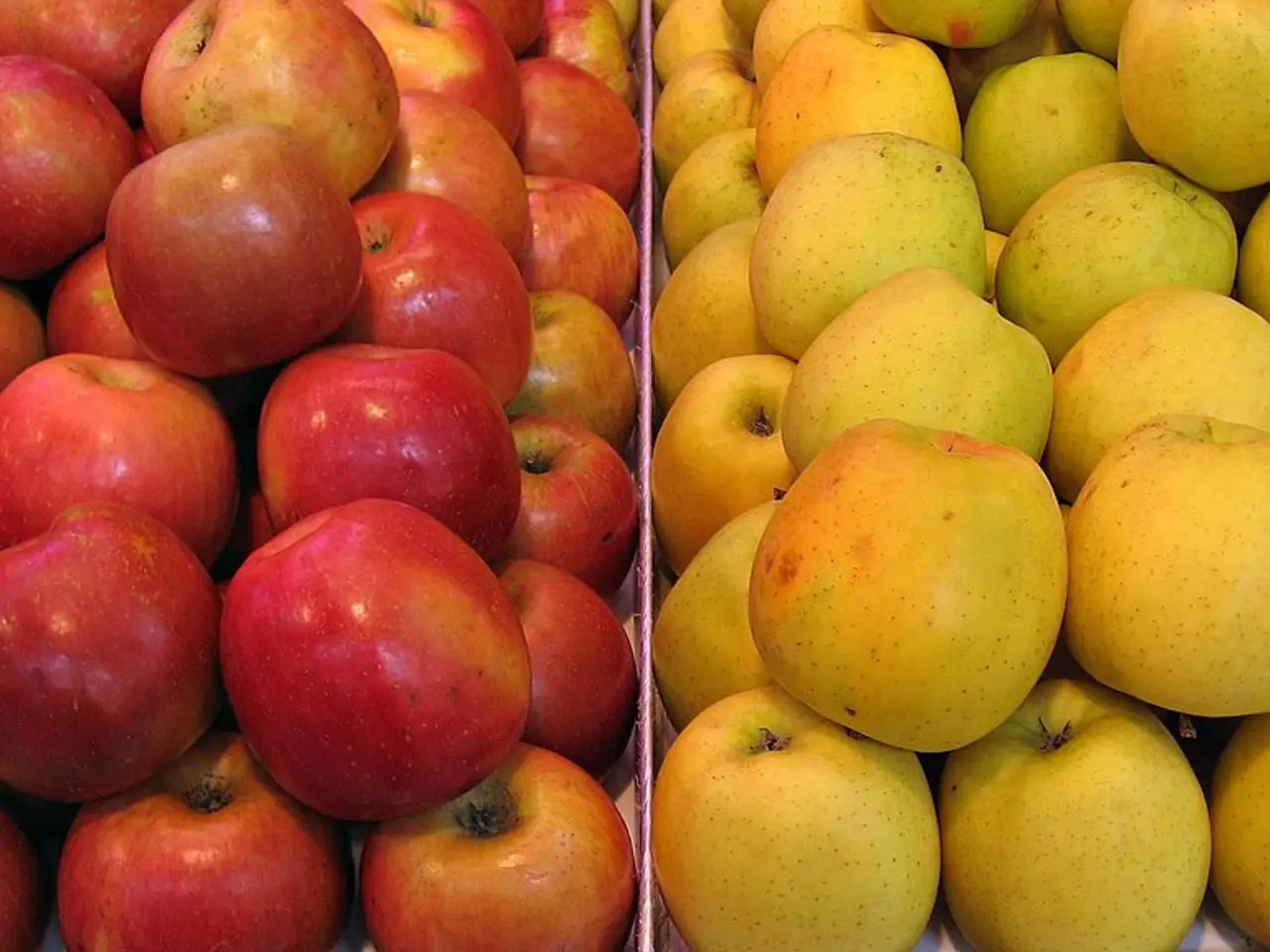Guide on Apple Storage
Store apples in cool, humid, and well-ventilated conditions for best results. Ideal storage conditions are around 30-35°F (around 0-2°C) with about 90-95% humidity, avoiding temperature fluctuations and ethylene buildup.
To store apples, keep them cool, either in the fridge or in a cool but humid room such as a cellar or unheated garage. Unblemished apples should be stored; those with bruises, cuts, or holes made by insects should be eaten immediately.
For long-term storage, consider ventilated wooden crates or breathable bags. Root cellars with sand or sawdust can maintain humidity and prevent bruising. Controlled atmosphere storage with regulated oxygen, carbon dioxide, and nitrogen levels can be used for very long-term preservation.
Different apple varieties have varying storage durations under ideal conditions. Honeycrisp apples generally store for about 2-3 months, while Fuji, Granny Smith, and Rome Beauty can last from 4 to 6 months or more in controlled atmosphere storage. For very long-term storage beyond several months, controlled atmosphere (CA) storage is the optimal method.
Wrap each apple in a single sheet of newspaper and place them in single layers on a tray for storage over winter. Apples can also be stored in clear freezer bags (or paper bags) in the fridge for up to a week. Sweeter apple varieties store for only a few weeks, while more tart varieties can be stored all winter long.
For very long storage or preservation for cooking/baking, freezing sliced apples treated with lemon juice can keep them for about a year.
Additional tips for maintaining apple quality include wrapping apples individually in breathable paper or bags, storing in ventilated wooden crates or plastic containers, avoiding heat sources and temperature fluctuations, and using a root cellar thermometer for monitoring.
An apple rack can store a large quantity of fruit and enable air to circulate between the layers. For a cheap alternative to apple racks, use an old filing tray, adding more layers as you need them.
Harvest apples with care, keeping the apple stalk intact to prevent rotting. Apple trees can be grown as standards, against a fence or wall, or in pots.
Early apple varieties, harvested between September and October, don't tend to keep well and are best eaten within a fortnight of harvesting. Late apple varieties, harvested in November, need to ripen in storage over four or five weeks and will then last throughout the winter months if stored correctly.
Remember, one rotten apple can spoil the whole crop, so check stored apples regularly to ensure there are no rotten apples among them. Monty Don demonstrates a short video guide on how to store apples. There is a guide to the best apple varieties to grow that can help in choosing an apple variety to grow or determining whether the apples will store well.
- To ensure a long lifespan for apples, store them in a cool, humid area, such as a root cellar, unheated garage, or even a ventilated home-and-garden shed, best-suited for the purpose of home-and-garden storage and gardening.
- Instead of storing apples in the fridge, if you desire a more natural lifestyle, consider utilizing creative methods like a breathable wooden crate, a sand-filled root cellar, or even an old filing tray for long-term storage of apples in cool, humid areas.




